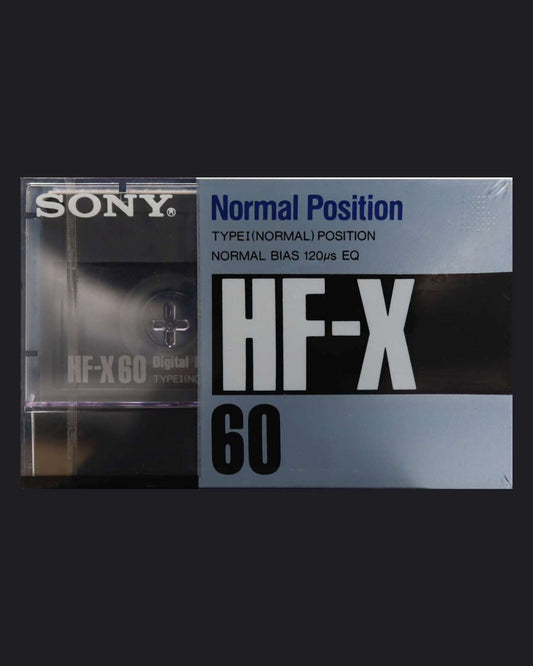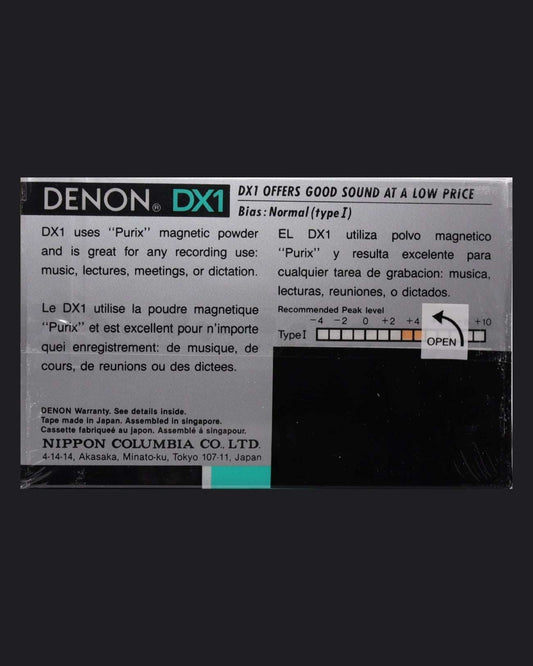Collection: Type I (Normal Bias)
Type I, or IEC I, ferric or 'normal' cassettes were historically the first, the most common and the least expensive; they dominated the pre-recorded cassette market.
The magnetic layer of a ferric tape consists of around 30% synthetic binder and 70% magnetic powder — acicular (oblong, needle-like) particles of gamma ferric oxide (γ-Fe2O3), with a length of 0.2 μm to 0.75 μm.
Each particle of such size contains a single magnetic domain.[33] The powder was and still is manufactured in bulk by chemical companies specializing in mineral pigments for the paint industry.
Ferric magnetic layers are brown in colour, whose shade and intensity depends mostly on the size of the particles.
Type I tapes must be recorded with 'normal' (low) bias flux and replayed with a 120 μs time constant. Over time, ferric oxide technology developed continuously, with new, superior generations emerging around every five years.
Cassettes of various periods and price points can be sorted into three distinct groups: basic coarse-grained tapes; advanced fine-grained, or microferric, tapes; and highest-grade Ferricobalt tapes, having ferric oxide particles encapsulated in a thin layer of cobalt-iron compound.
Ferricobalt tapes are often called 'cobalt doped', however, this is historically incorrect. Cobalt doping in a strict sense involves uniform substitution of iron atoms with cobalt. This technology has been tried for audio and failed, losing to chromium dioxide. Later, the industry has chosen the far more reliable and repeatable process of cobalt adsorption — encapsulation of unmodified iron oxide particles in a thin layer of cobalt ferrite.
https://en.wikipedia.org/wiki/Compact_Cassette_tape_types_and_formulations
-
Sony HF-S (1985 JP)
Regular price From $10.49 USDRegular price -
TDK AD (1994-1997 JP)
Regular price From $16.63 USDRegular price -

 On Sale!
On Sale! -
Sony HF-X (1989 JP)
Regular price From $9.49 USDRegular price -

 On Sale!
On Sale!Scotch High Energy (1973-1974 US)
Regular price $5.00 USDRegular price$11.62 USDSale price $5.00 USDOn Sale! -
Denon DX1 (1988-1990 US)
Regular price From $11.31 USDRegular price$0.00 USDSale price From $11.31 USD -

 On Sale!
On Sale!TDK Superior D (2003-2005 US)
Regular price From $5.00 USDRegular price$6.87 USDSale price From $5.00 USDOn Sale! -

 On Sale!
On Sale!Maxell UR (1994-1995 JP)
Regular price From $4.90 USDRegular price$6.82 USDSale price From $4.90 USDOn Sale! -
Maxell XLI-S (1990-1991 JP)
Regular price From $16.99 USDRegular price -

 On Sale!
On Sale!TDK AR-X (1990-1995 JP)
Regular price From $14.49 USDRegular price$33.50 USDSale price From $14.49 USDOn Sale! -
TDK AD (1992-1993 JP)
Regular price From $12.59 USDRegular price -

 On Sale!
On Sale!Sony KO (JP)
Regular price From $9.81 USDRegular price$11.94 USDSale price From $9.81 USDOn Sale! -
Maxell CD's I (1994-1995 JP)
Regular price From $6.33 USDRegular price -
Sony AHF (1982-1984 JP)
Regular price From $22.99 USDRegular price -
Sony HF-Pro (1989 JP)
Regular price From $24.99 USDRegular price -
Sony HF (1986-1987 US-JP)
Regular price From $12.06 USDRegular price
































